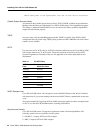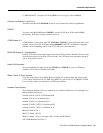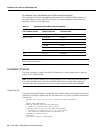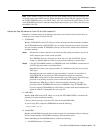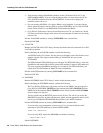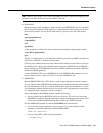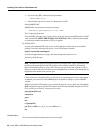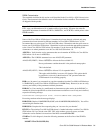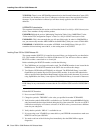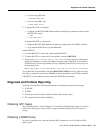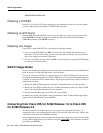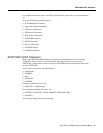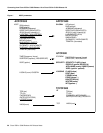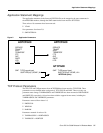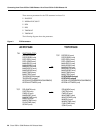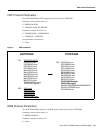
32 Cisco IOS for S/390 Release 2.0 Release Notes
Installing Cisco IOS for S/390 Release 2.0
TCPCFG01: There is a new NETMASK parameter that lets the Network Information Center (NIC)
divide the Class B addresses into Class C addresses to alleviate some of the worldwide IP address
shortages. If your installation is affected you will have already applied to the NIC for these
addresses.
USERMOD Customization
The statements described in this section are all described in the Cisco IOS for S/390 Customization
Guide. These members all ship with the product.
UMODTRAN: Read the section “Maintaining Translation Tables Using UMODTRAN” in the
“Telnet and tn3270 Configuration Chapter” of the Cisco IOS for S/390 Customization Guide.
UMODAPPL: This is the usermode that you will most likely apply. In order for UMODAPPL to
run, you must modify member APPLNAME in the SAMP library with your correct VTAM APPL.
UMODPOOL: UMODPOOL uses member ACCPOOL in the SAMP library. Old style 3174
controllers did not let things start with 01, so the starting name is ACSVLT02.
Invoking Cisco IOS for S/390 Release 2.0
The startup member, RUNTCP, is located in the control library you designated in your installation
JCL. This member will invoke Cisco IOS for S/390 release 2.0. You will have a choice to submit
RUNTCP as either a started task or as a batch job.
Before submitting the RUNTCP member, consider the following:
• The CMND data set is no longer allocated or used. The START00 member is now located in the
PARM data set. The RUNTCP member in the CNTL data set reflects this change.
• Two libraries, PFSLOAD and FTPLOAD, are allocated. The PFSLOAD library is used with
OpenEdition and contains Physical File System (PFS) modules. It must be APF-authorized to
work as specified in the Installation Requirements section earlier in this document. If you are not
using OpenEdition, the library is not required. The FTPLOAD library is reserved for future use.
Note TCPLOAD must never be in the linklist. If SASLINK is used, you must place it after the
LINK library in any concatenation to ensure that the Cisco IOS for S/390 version of LSCNCOM is
used.
Edit the RUNTCP member.
• Do not execute TCPNAMES.
• Change the symbolic ‘TRGINDX’ to the value you specified in member TCPNAMES.
• Verify that the symbolic SSN=ACSS is available for use. The MVS command D SSI will display
subsystem names that have been invoked during the life of the current IPL. You can use ACSS if
it either does not display or if it shows as inactive. If ACSS is active, you must choose a different
name for your subsystem.
• Verify that the symbolic ‘SRC=%’ is available for use.
• If you are using a user VTAMLIB, you must add it to your STEPLIB concatenation to make sure
RUNTCP can find your USSTAB.
• You need to add one of the following lines immediately after the JOBCARD to support
diagnostics.



